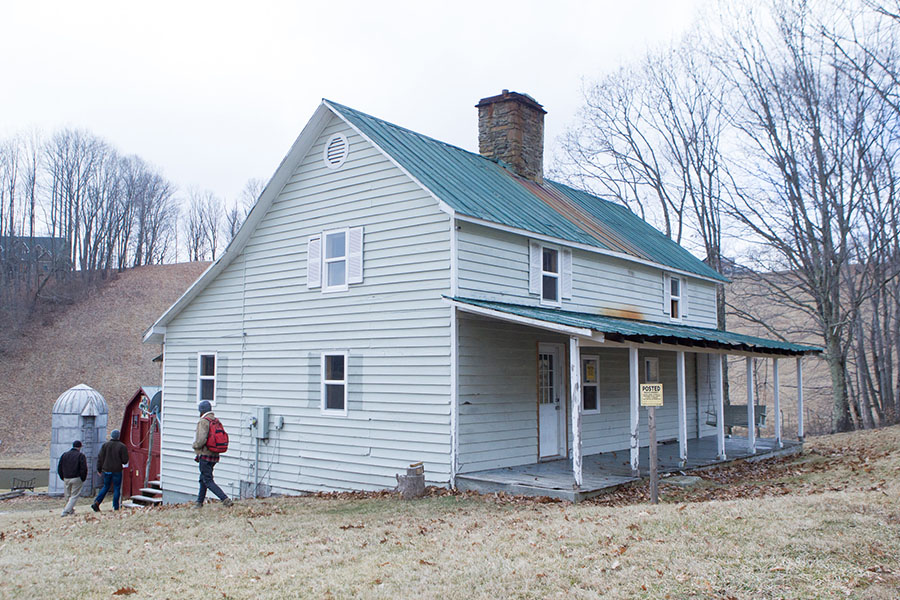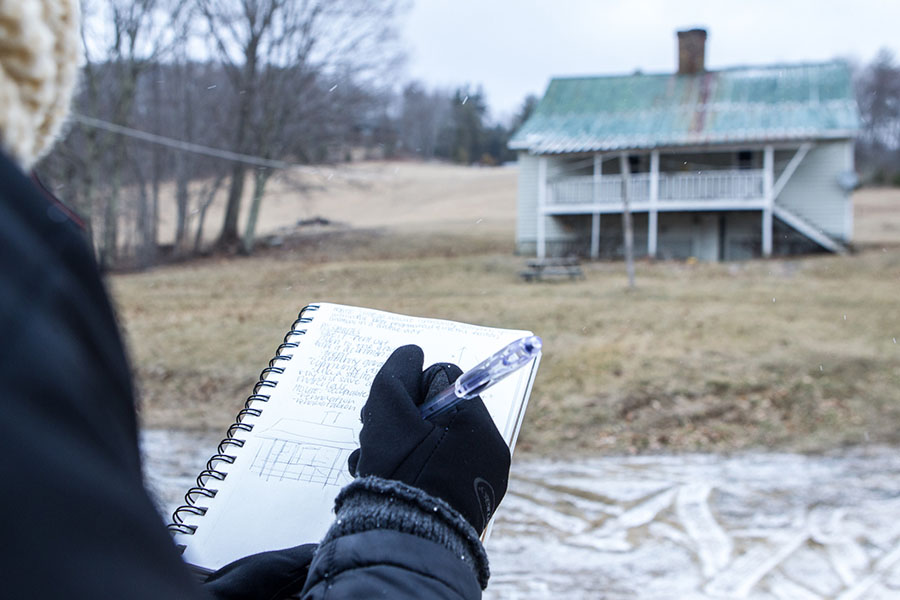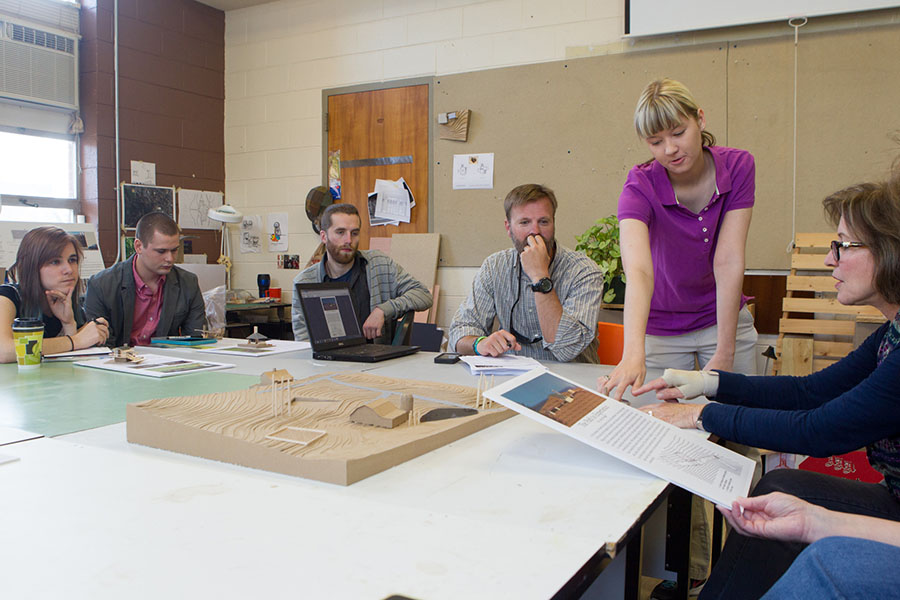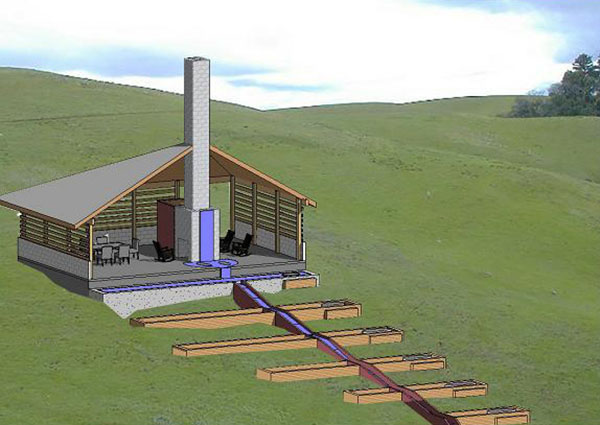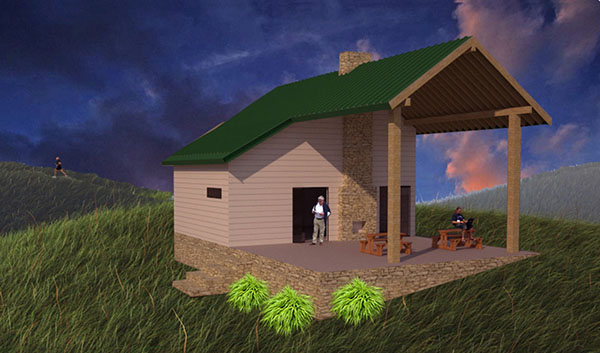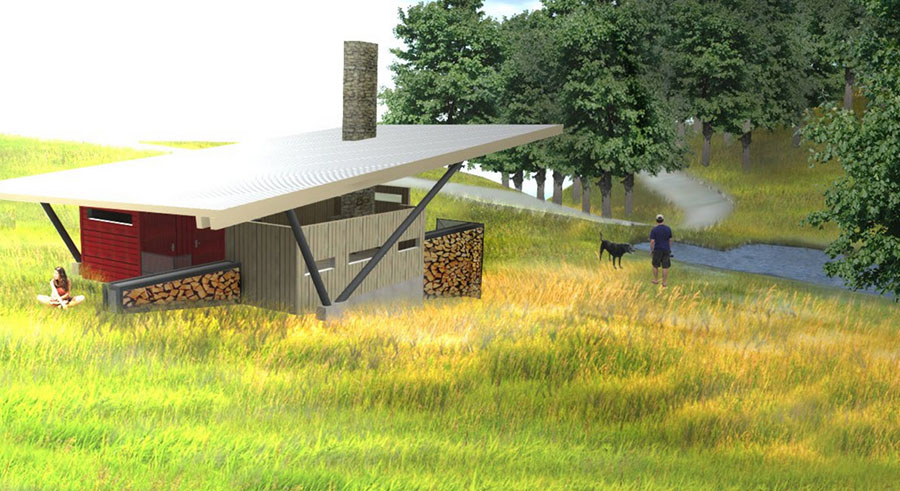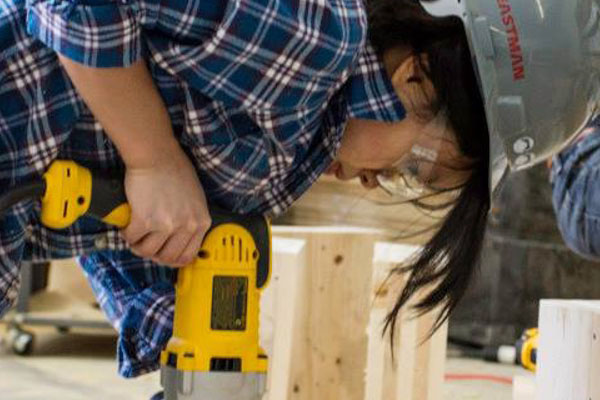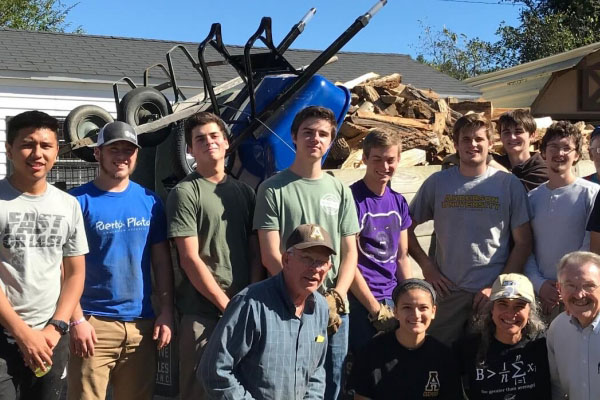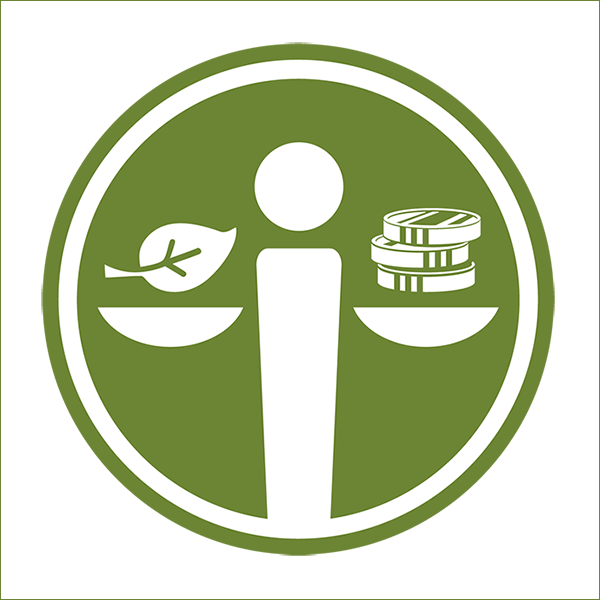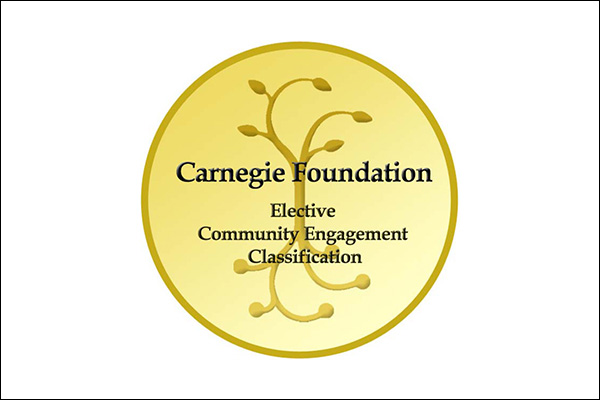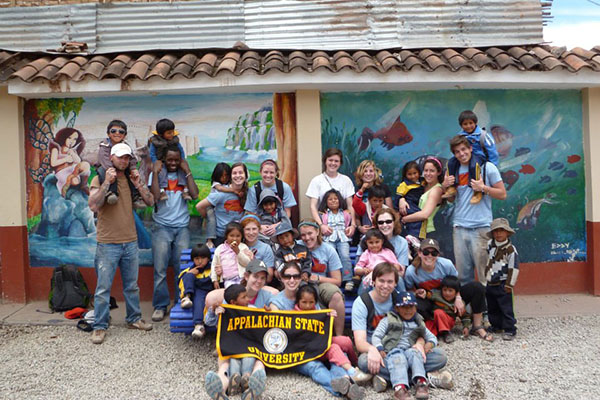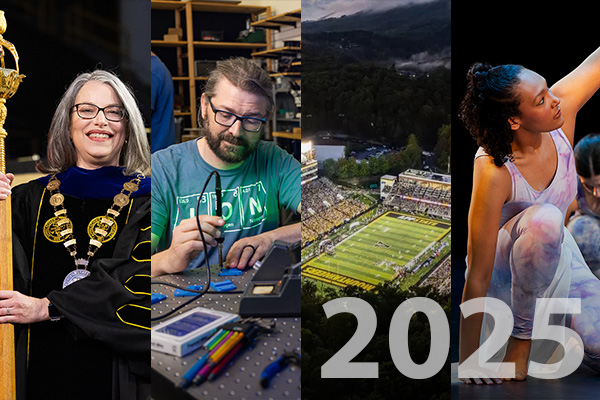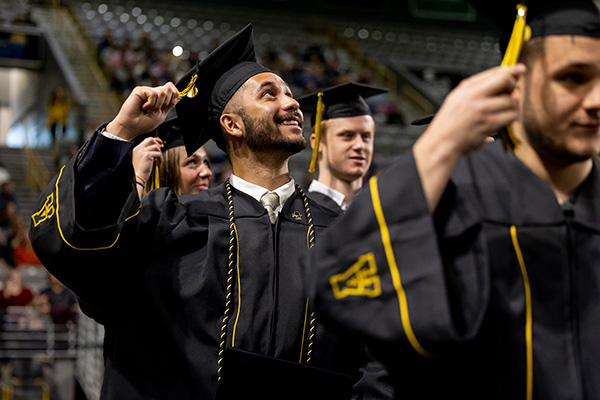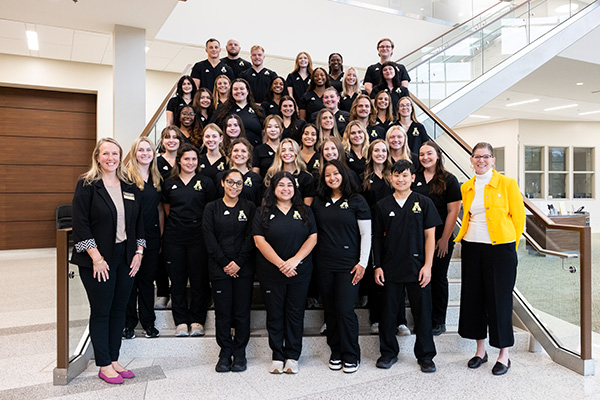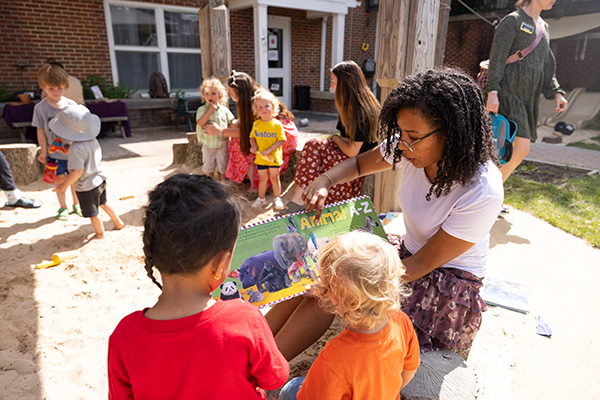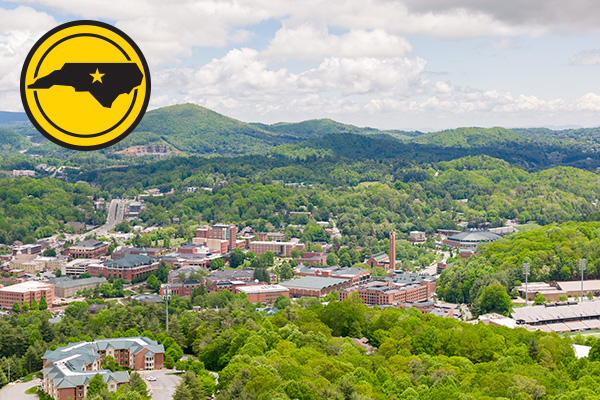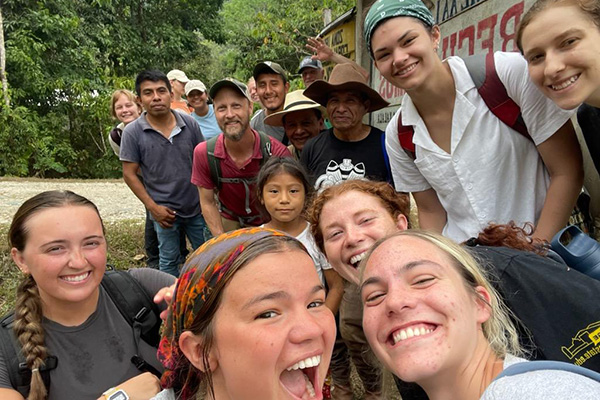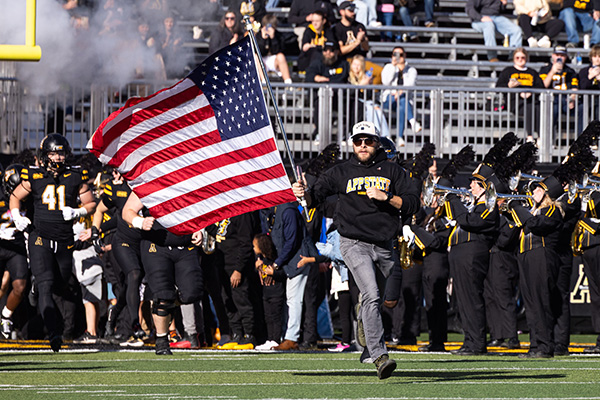BOONE, N.C. — Students in an architectural design studio course worked on a community challenge this spring: Can an early 20th-century homestead be rehabilitated into a new life for a local neighborhood?
Professor Chad Everhart presented nine upper-level students with this real-life scenario faced by Summit at Lost Ridge Property Owners Association, whose members are undecided over what to do with the uninhabited house that sits next to a frequently used barn and fishing pond.
Appalachian State University seeks to develop in students a mindset of cultural and environmental sustainability. As part of that, building science majors need to question how to design high quality items – “from smartphones to vehicles to buildings,” according to Everhart – that are built to last and able to endure change.
His students’ task: develop a creative solution that respects history but incorporates the neighborhood residents’ current and future needs.
Working with clients
The class visited the site to measure dimensions and talk with residents about the house’s history and the neighborhood’s desires, which included the idea of a community gathering place. They took note of what materials could possibly be reused, such as the aged tin roof and wooden siding. The stately fireplace would later become a focal point of several students’ designs.
Each student developed three ideas to start and then paired those down to one apiece after receiving client feedback halfway through the project. After fine-tuning their designs, the students formally presented nine models.
This was the first time many of the students had worked with an actual client. “By working with people who weren’t sure what they wanted, we could give ideas of how they could use the space to benefit the community. I liked the idea of reusing things,” said Tom Siebert.
“Each project we’ve been assigned in the past had rules. This was wide open – do anything we wanted to with the house. It took me awhile to get my wheels turning, but I enjoyed being creative,” commented Thomas May.
“My favorite part was making three original ideas that were all really different and seeing how they changed into one final design,” Emily Porter added.
The students gained experience making computerized 3-D renderings as well as hand-made, physical models, which was helpful in showing the clients how each design would fit into the existing landscape.
“I had to take into account the typography,” said Amy Kreager. “You have to work with the site – making everything come together as one was important.”
Creating out-of-the-box ideas
Everhart said the architectural design studio course has undertaken 15 service-learning projects in recent years, but that this was the first using an old building. “This was challenging in that we had something pre-existing we had to respond to,” he said.
Students’ ideas for the house included:
- slicing the house in half to create indoor and outdoor gathering spaces, with the fireplace as a focal point
- dismantling the house and using the materials to build a sheltering roof around the existing fireplace
- stripping away all but portions of the outside walls, creating a skeletal pavilion
- turning the house site into a garden house for year-round planting, plus meeting space
- enhancing the “ruinous state” by removing the roof and windows, creating an open air installation
“The students’ final presentation was great – very professionally done and they offered many ideas for us to consider,” said resident Christina May. “We will be able to show their renderings, models and designs at our next meeting.”
“The students were so creative! I really appreciated how they each presented something different for us to consider,” said resident Susan Weinberg, who along with husband Dan attended the final presentation in the design studio in Appalachian’s Harper Hall.
May said the collaboration was mutually beneficial. “We gained varied and valuable insights into options for our property, and the students expressed their gratitude for an opportunity to gain real-world experience with clients. I think this partnership reflects well on the POA’s investment in our larger community and in our youth, as well as on App State’s contributions to Watauga County.”
The POA will consider the designs as they begin planning long-term use of the property this summer.
What do you think?
Share your feedback on this story.
About the Department of Sustainable Technology and the Built Environment
One of seven departments housed in the College of Fine and Applied Arts, the Department of Sustainable Technology and the Built Environment at Appalachian State University features an integrated array of programs spanning the fields of sustainable design and technology. Its mission is to foster a strong and vibrant culture of inquiry, discovery and innovation that integrates theory with application, problem seeking with problem-solving, local issues with global perspectives and technological progress with environmental stewardship. It offers bachelor’s degrees in sustainable technology and building science, and a master’s degree in technology. Learn more at https://stbe.appstate.edu.
About the College of Fine and Applied Arts
Appalachian State University’s College of Fine and Applied Arts is a dynamic and innovative group of seven academic departments, bringing together a variety of perspectives, experiences and real-world education to provide unique opportunities for student success. The college has more than 3,500 undergraduate and graduate majors. Its departments are Applied Design, Art, Communication, Military Science and Leadership, Sustainable Development, Sustainable Technology and the Built Environment, and Theatre and Dance. Learn more at https://cfaa.appstate.edu.
About Appalachian State University
As a premier public institution, Appalachian State University prepares students to lead purposeful lives. App State is one of 17 campuses in the University of North Carolina System, with a national reputation for innovative teaching and opening access to a high-quality, cost-effective education. The university enrolls more than 21,000 students, has a low student-to-faculty ratio and offers more than 150 undergraduate and 80 graduate majors at its Boone and Hickory campuses and through App State Online. Learn more at https://www.appstate.edu.

